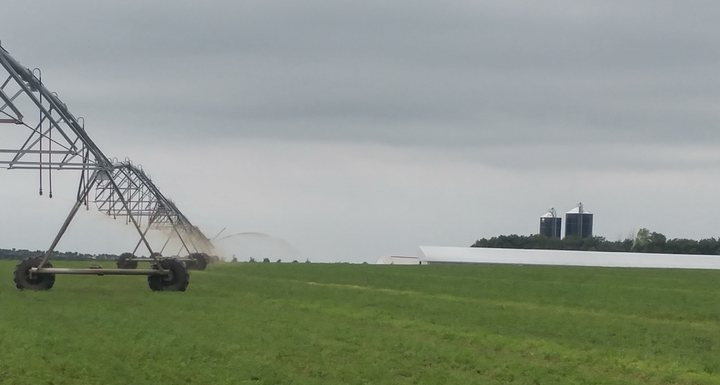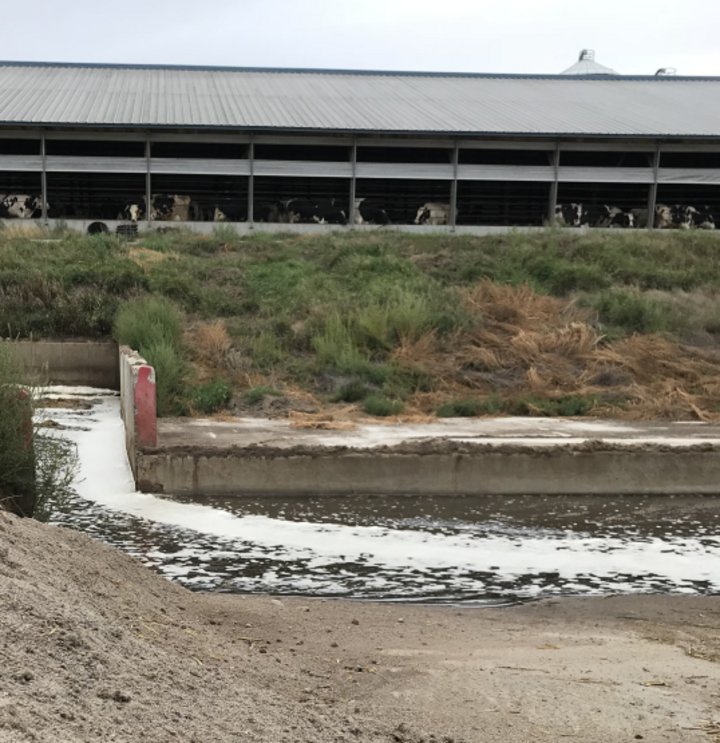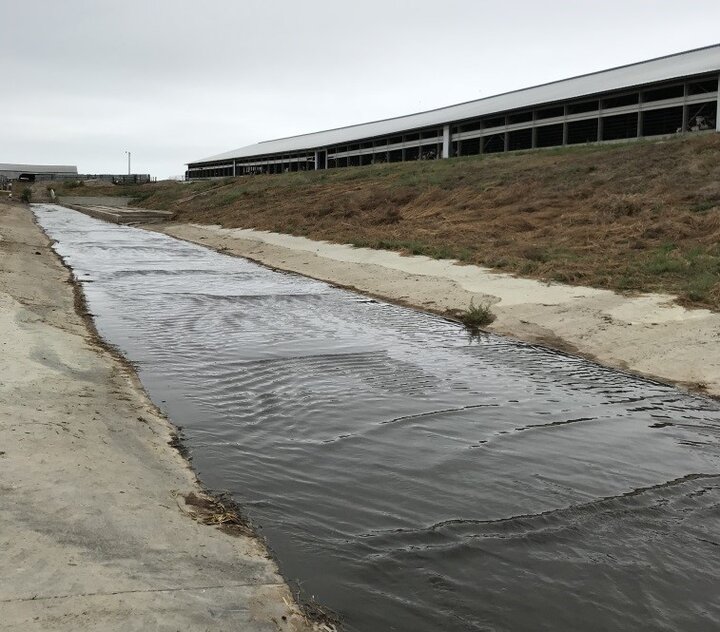Observations of Manure Management on a South Dakota Dairy
As a native Nebraskan I have been given a few ribbings over the years about my supposed genetic affinity for corn and cattle by friends who are from more urban locales. However, if there is one thing I have learned studying manure management at the University of Nebraska, it is that I am always going to be learning new things about agriculture. This was exemplified when I attend the 2018 North American Manure Expo in Brookings, SD this summer. I returned to Lincoln overflowing with new information and poop emoji paraphernalia.
As a part of the Expo events, participants were invited to participate in one of several tours to local livestock operations. I chose to tour a family-operated dairy farm located in Hamlin County, SD to witness first-hand some of the improvements that have been added to their manure management system over the past few years. I was able to observe how, in trying economic times for the dairy industry, this family farm has modified their manure management system to get the most out of precious resources – water and nutrients.
Utilizing resources efficently
Operating a dairy farm in South Dakota means that water, which dairies require for animal consumption, milk cooling, cleaning equipment and barns, and irrigating crops, is a limited resource. The dairy that I visited cultivates several hundred acres of cropland to grow feed for their cows, but the water table in the region is deep, which makes the use of well water for irrigation an expensive proposition. At the same time, dairy production is uniquely suited to optimize nutrients present in manure because dairy cows require feeds such as alfalfa or silage that have especially high phosphorus removal rates. For more information on nutrient balance for dairies check out “A Systems Approach to Dairy Nutrient Planning: Part 1, Part 2, Part 3.”
Diversification provides flexibility
The dairy farm I visited included multiple animal housing types, each resulting in the accumulation of manure with varying characteristics, but all providing suitable nutrient sources for crop production. The operators of this dairy added 150 calves in hutches and 200 head of replacement heifers and plan to add several hundred more head of beef cattle in open lots; these animals are sources of solid manure. Solid manure has some advantages: storage can be flexible since solids can be stockpiled until land application is feasible; it is well-suited for being composted; and manure handling risks can be lower than for liquids manure storages. (Hydrogen sulfide and methane gases generated during storage of slurry manure are less of an issue with solid manure.) However, as is true for most dairy operations, a liquid manure stream is generated from the barns housing mature dairy cows and from the milking parlor.

An advantage of liquid manure is that it can be pumped and, when stored in a lagoon, the effluent can be used as a source of irrigation water. On this dairy operation, liquid waste passes through a series of 4 earthen storage ponds where microbes provide some biological treatment. The first two ponds in this sequence are quite small but while in these ponds the majority of the sand, used as bedding for the dairy cows, settles out of the effluent stream. The remaining two ponds have larger holding capacity and allow for much of the manure solids to settle out and the effluent to be recycled to flush manure from the barns and used to irrigate an alfalfa field. The addition of nutrient rich irrigation water to alfalfa has increased production to an estimated five cuttings per growing season, providing the cattle with a significant source of feed over the year. This kind of operational diversification can result in organizational challenges; however it is also an opportunity to optimize nutrient value as application timing and distance to crop fields where manure nutrients can be applied can be addressed when multiple manure sources are available.
Recovering reusable resources to improve efficiency

Another change to manure management on this dairy began in 2013 with construction of a sand lane incorporated into the existing management system for one of the two dairy barns. Sand had long been used as bedding for the dairy cattle; however, prior to the addition of the sand lane the dairy operator estimated $63,000 was spent annually to replace sand that was removed when manure was flushed from barn alleys twice daily. The addition of a sand lane allowed for a sand recovery rate of close to 90% by creating a long sluice where the majority of sand settles prior to the flushed material flowing into the earthen storage basin. Additional discussion of the economics of sand bedding can be found in “Sand Bedding for Dairy Cows has Benefits and Costs.”

In addition to the savings associated with the recovery and reuse of bedding sand, removing the sand bedding from the manure stream prevents sand from accumulating in the storage basins where it reduces storage and treatment capacity. The lower solid content in the effluent of the storage basins allows the dairy to reliably recover a larger percentage of the process water for reuse as a source of high nutrient irrigation water.
Lessons for wider application?
Not every operation will be able to implement the precise strategies this dairy is using to optimize their water and nutrient resources. However, my takeaway from this tour is that all operations have their own unique challenges and advantages for manure management and can likely benefit from examining current practices and considering available practices that may allow them to capture greater value from the nutrients present in their animal manure.
Normal 0 false false false EN-US X-NONE X-NONE /* Style Definitions */ table.MsoNormalTable {mso-style-name:"Table Normal"; mso-tstyle-rowband-size:0; mso-tstyle-colband-size:0; mso-style-noshow:yes; mso-style-priority:99; mso-style-parent:""; mso-padding-alt:0in 5.4pt 0in 5.4pt; mso-para-margin:0in; mso-para-margin-bottom:.0001pt; mso-add-space:auto; line-height:115%; mso-pagination:widow-orphan; font-size:11.0pt; font-family:"Arial",sans-serif; mso-ansi-language:EN;}This article was reviewed by Amy Schmidt and Leslie Johnson